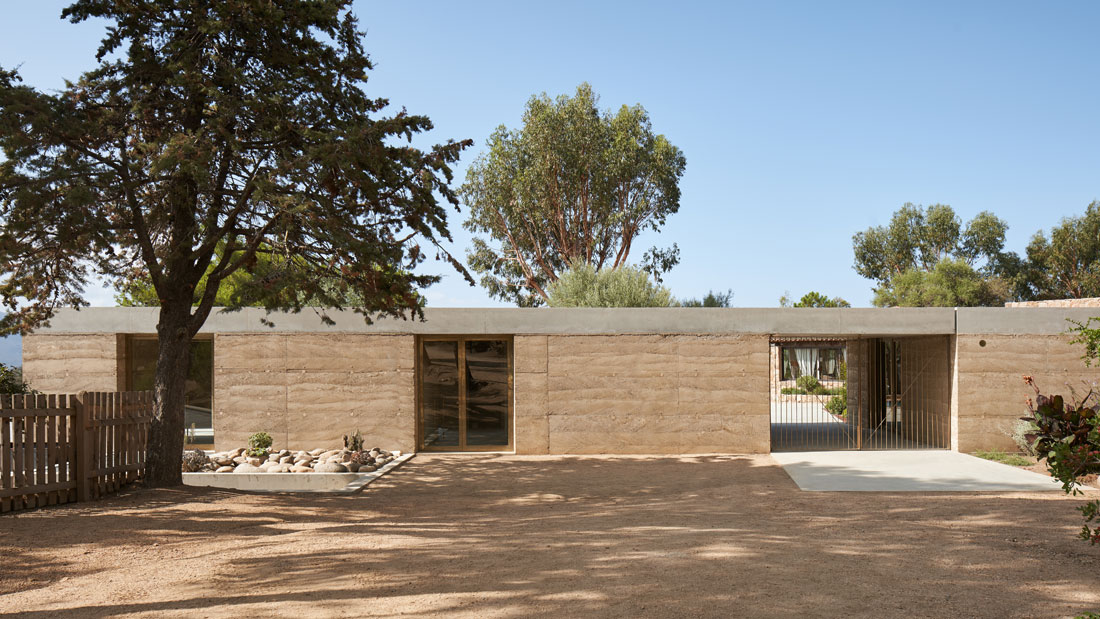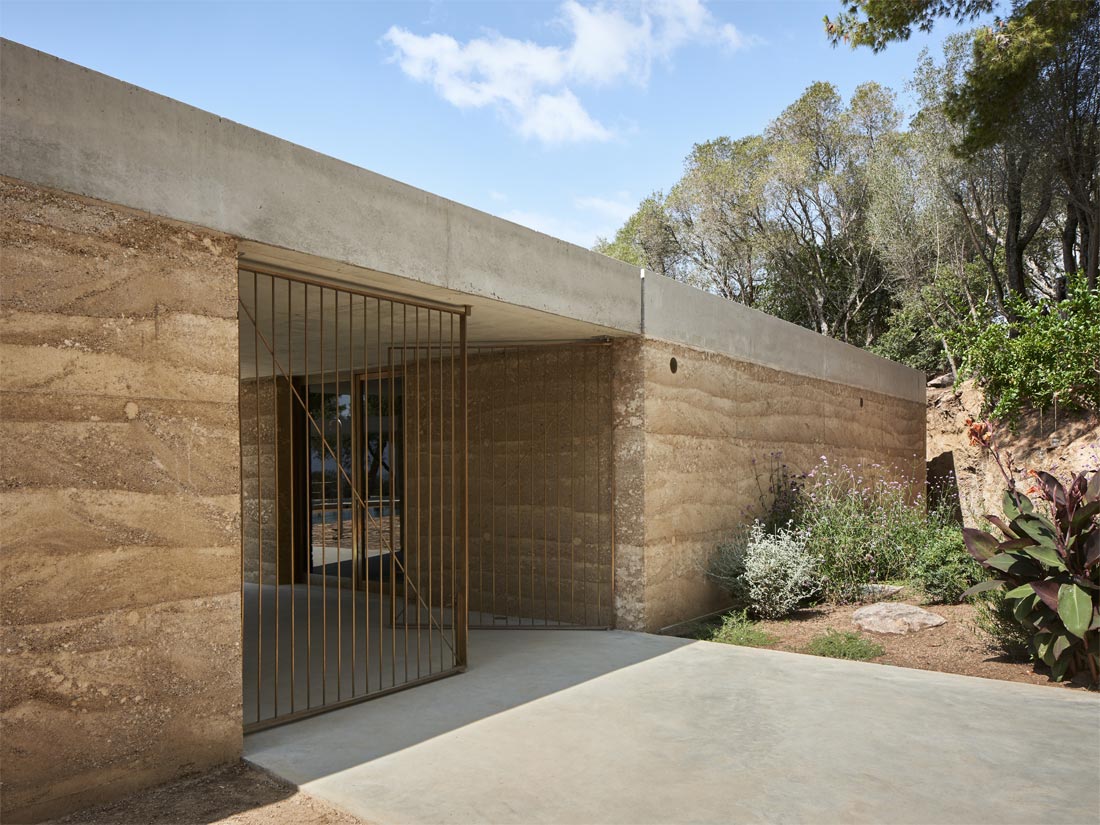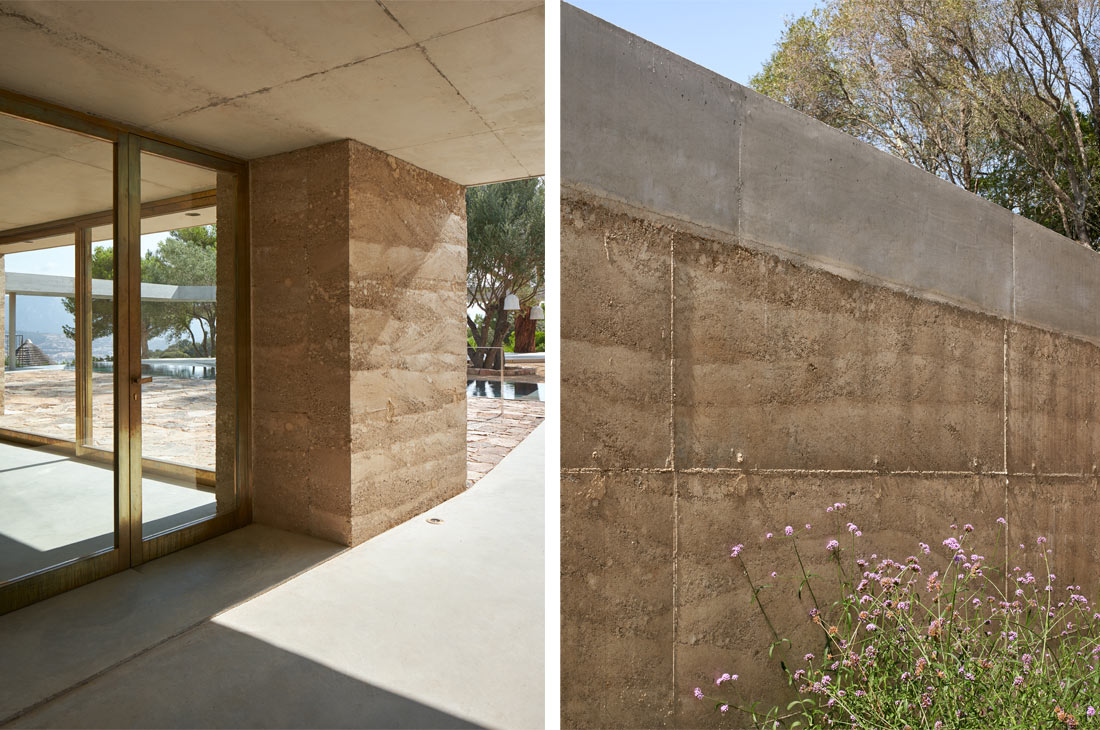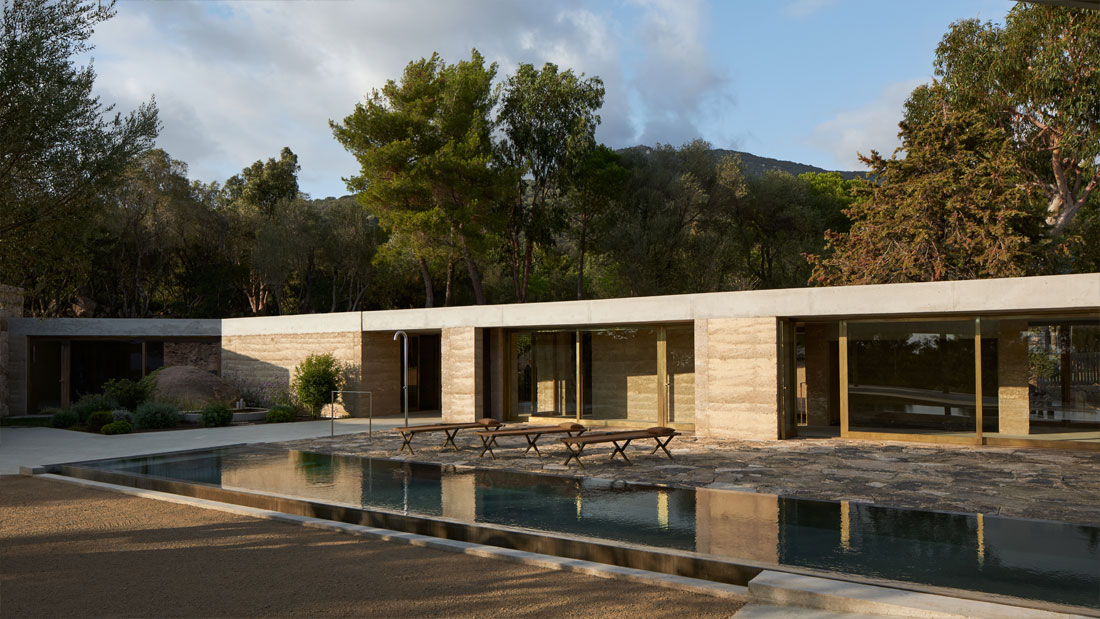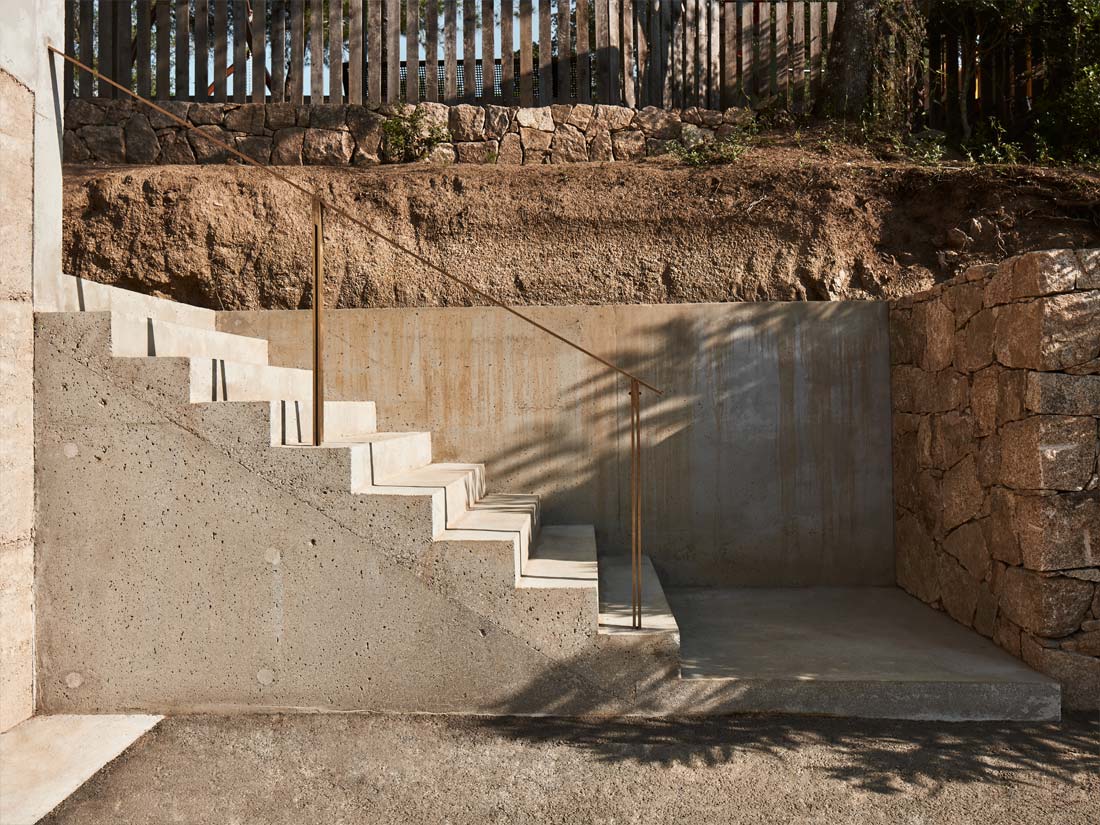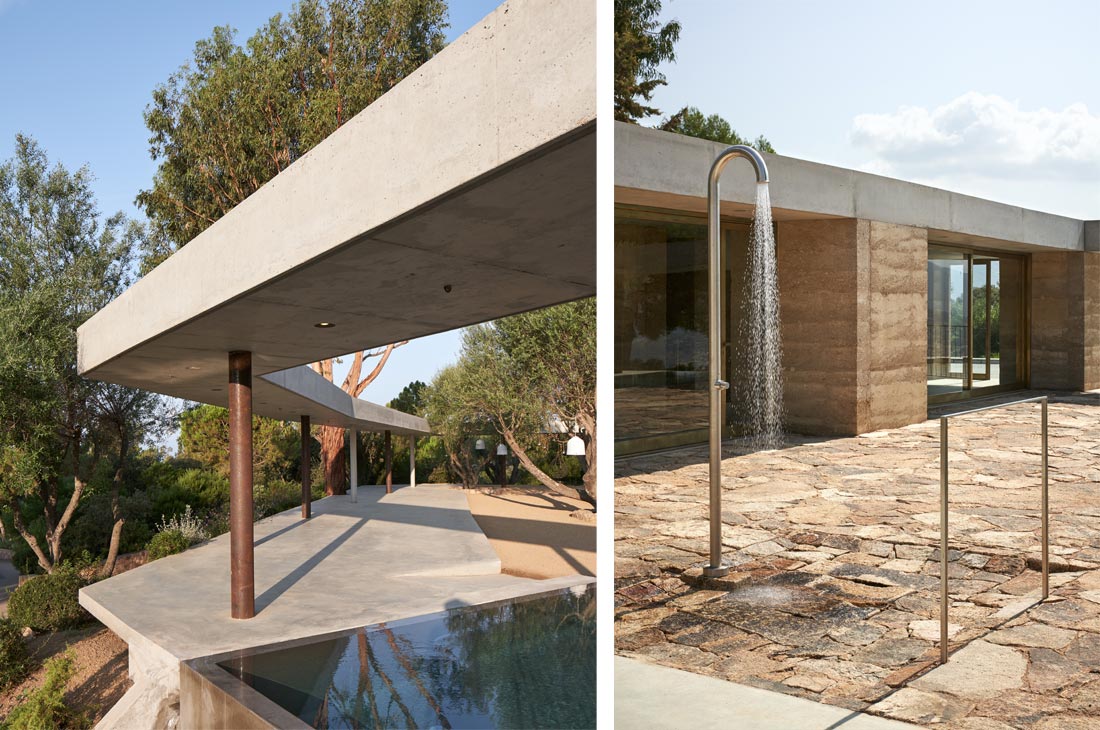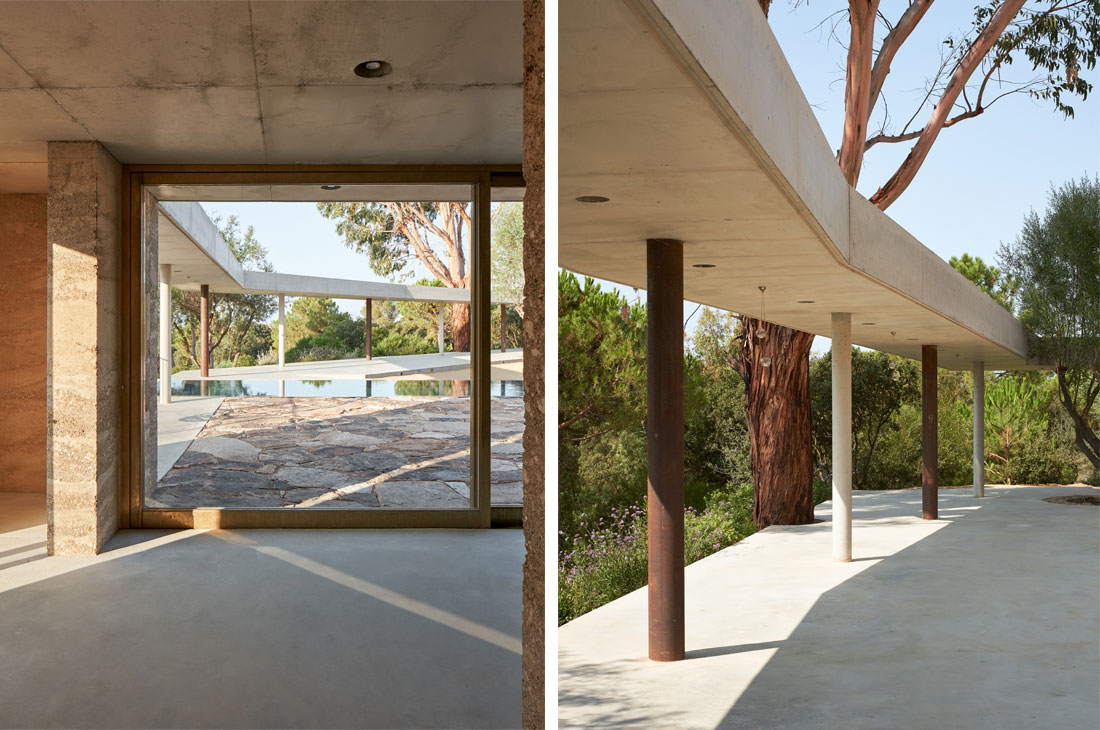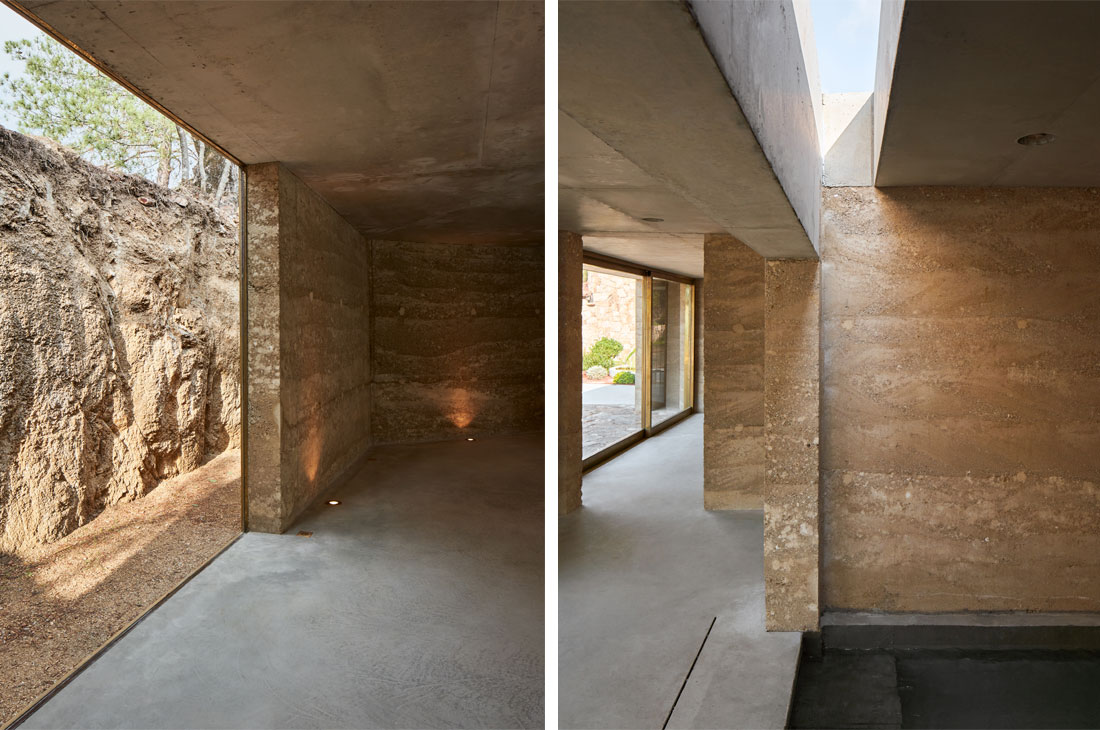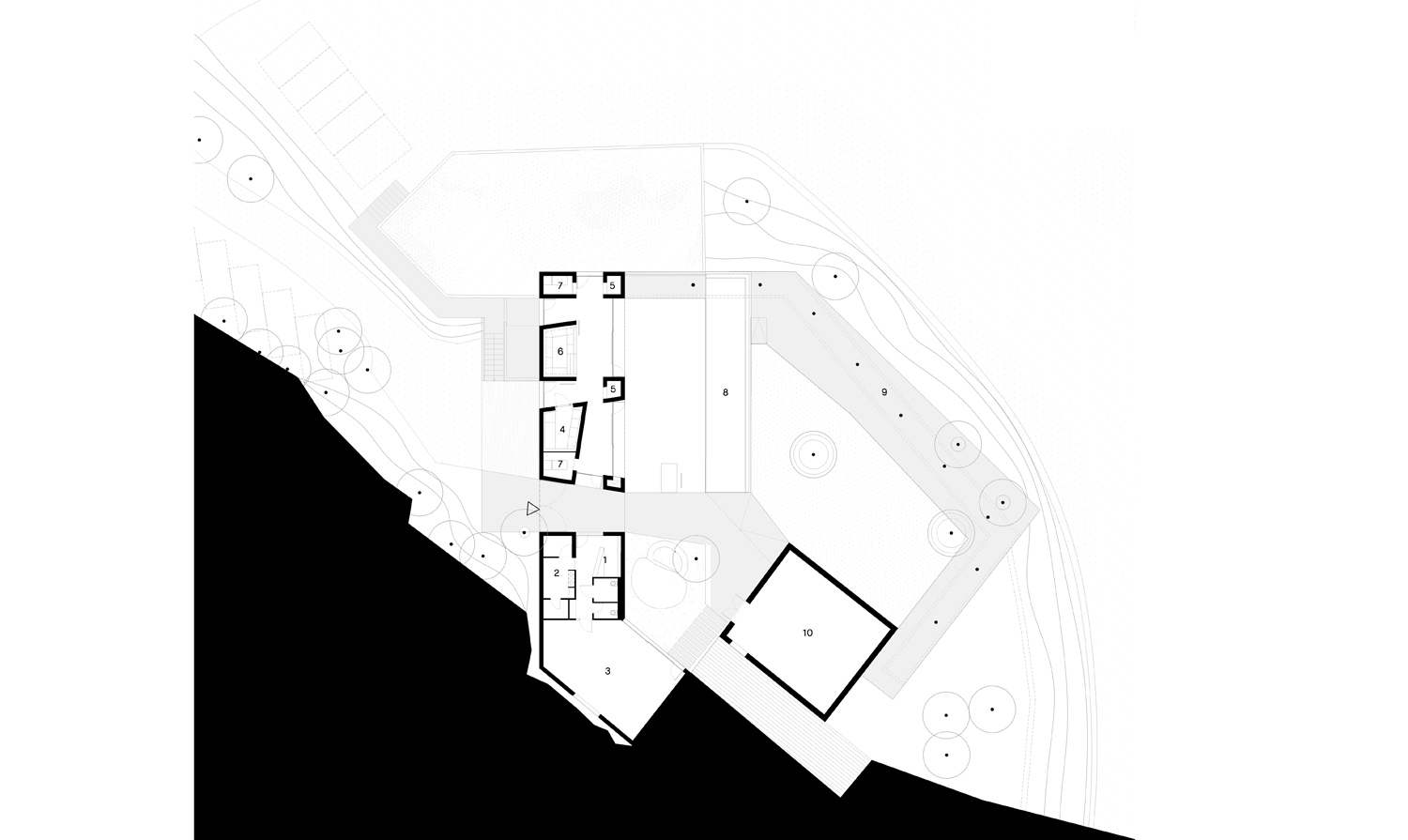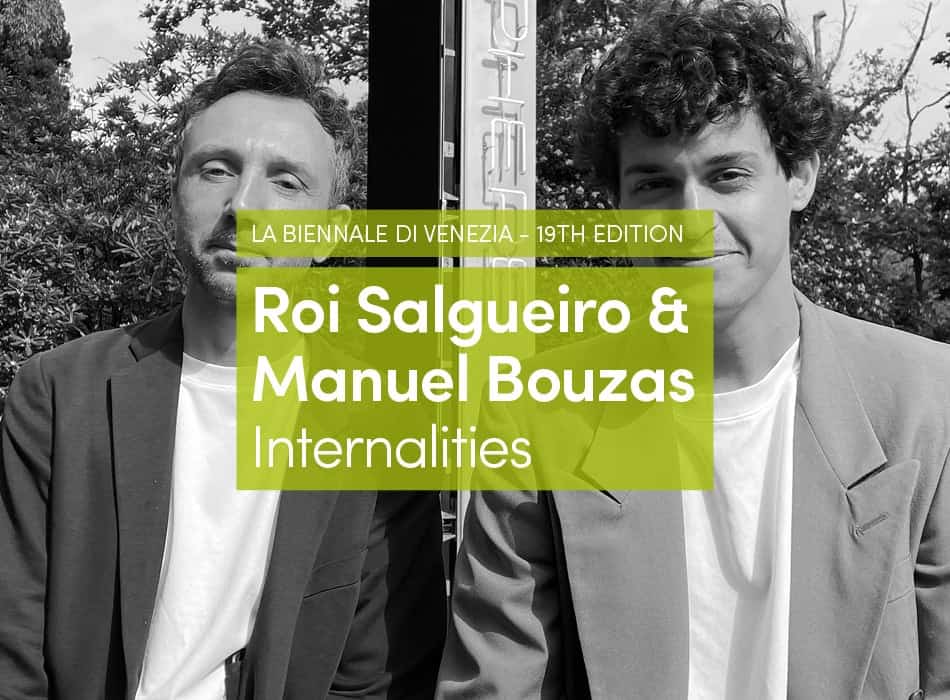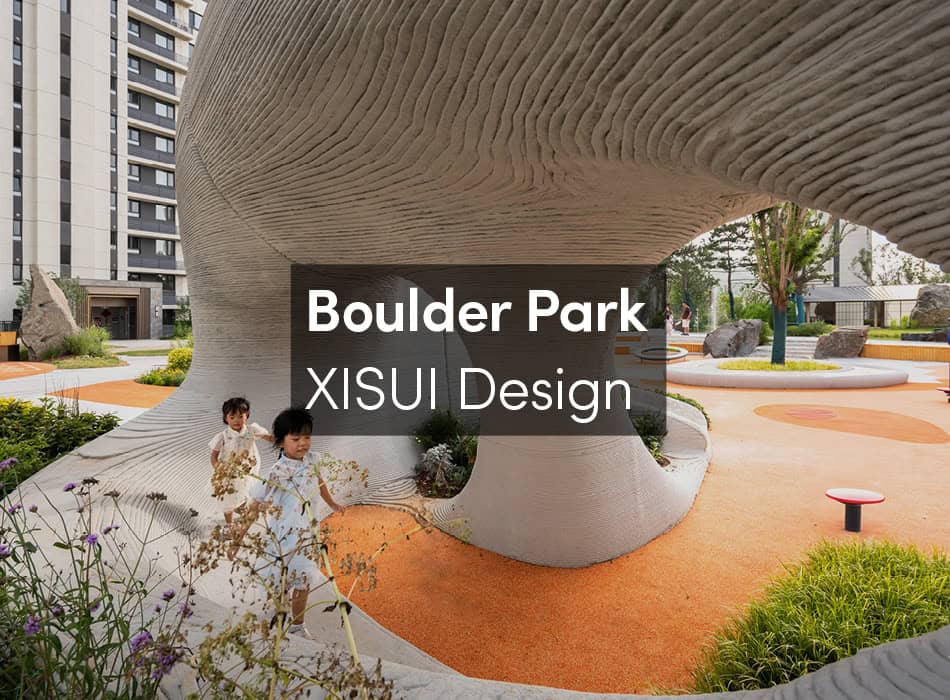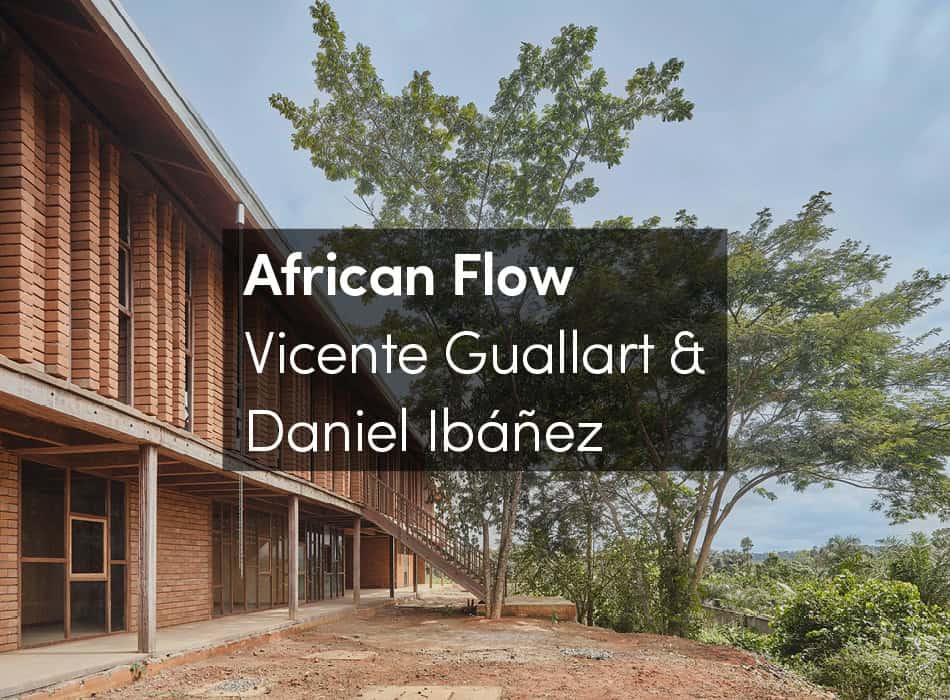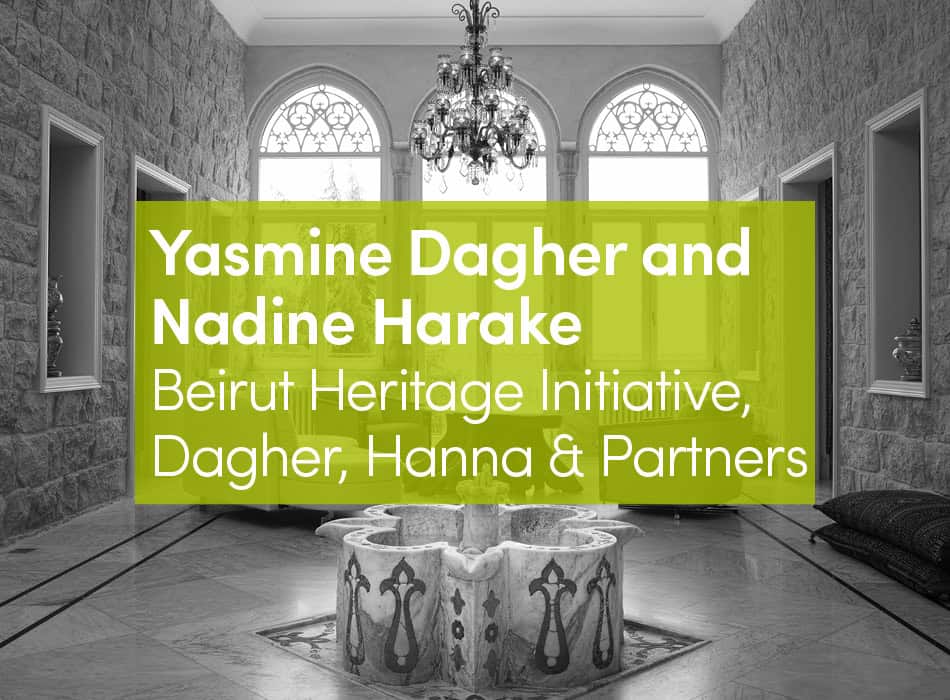The site is located at the bottom of the village of Olmeto in southern Corsica, an ancient medieval village built largely of stone and with a strong connection to the surrounding territory.
Overlooking the Gulf of Valinco, the site faces the town of Propriano and frames the Mediterranean Sea. It is a former hillside farm that previously housed a vineyard and an olive grove.
The geographical location is exceptional, first of all, because of its proximity to the sea, which means that it is swept by the sea breezes, carrying a fine mist that the old hills can capture. In addition, the remarkable quality of the soil has made it a particularly fertile area. Our reflection focused on the toponymy of the place, called “Vigna Maggiore” (the most abundant vine), and delved into this ancient use which became the origin for the design.
Driving Force Behind the Project and its Development
The landscape qualities of the project site include its remarkable century-old trees (eucalyptus and olive trees), views of the sea, and a geological base of ochre-colored tuff, a source of inspiration. The preference was to fully realize the geography of the site by turning it into the raw material for the project.
Agriculture is a deep part of the history of Corsica: the tillage of the land with a view to crop production. In this historical continuity, the project was designed using stabilized and compacted earth to tell the history of the site. The horizontal strata visible on the façades, derived from the use of this material, talk about the stratification of the ground as a kind of geological cut.
The project was born from the ground, on a site where the thickness became program and where the play of light and shade revealed each block of earth, helping us perceive the uses.
The material was then excavated in the thicker part of the building while a light passageway, supported by thin center posts, recalling the trees, came to frame the sea and the landscape. A certain confusion was created between architecture and nature, accentuated by the alternation between concrete and metallic supports.
The tubular poles were left uncoated and, as a result, they blend in with the color of the tree trunks, allowing them to disappear.
The perception of the building can be summed up as a sort of “complex austerity”. The technical equipment necessary for the operation of the facility has been designed in such a way as to be totally imperceptible, leaving the material and its elementary nature in the foreground.
Contracting Authority and the Architect
The contracting authority (whose demands were loosely structured) expressed a desire to create a unique place within a large property. The design was meant to create an enclave, capturing a fragment of the landscape.
Despite a lack of much knowledge of architecture, as the exchanges progressed, the owner was able to interiorize the story we told through our intervention. The more time passed, the more he became an important ally in the realization of the project.
Construction Systems and Materials
Each material was used in accordance with its own characteristics: in situ concrete for its compressive strength qualities, poured and reinforced concrete for its tensile potential.
The in situ concrete was adapted to meet the different technical, thermal and aesthetic expectations. The water composition, the choice of cement, the calibration of the aggregate, which was extracted and sorted on site, allowed us to control the composition of the material.
The reuse of soil from the site cut back on transportation requirements and damage to the natural landscape. In addition, the concrete-bonded earth provided walls with good thermal mass, resulting in internal temperature regulation. Its use in 40 cm thick walls allowed us to generate thermal inertia in order to ensure comfort in summer.
Stabilized raw earth has been widely used traditionally in Corsica. Currently abandoned in favor of standardized construction techniques, the use of this material makes it possible to reconnect with the ancient vernacular crafts of the territory.
The use of brass, with its patina, for doors and windows as well as hardware comes to match the ochre of the surroundings and complements the minerality of the design.





